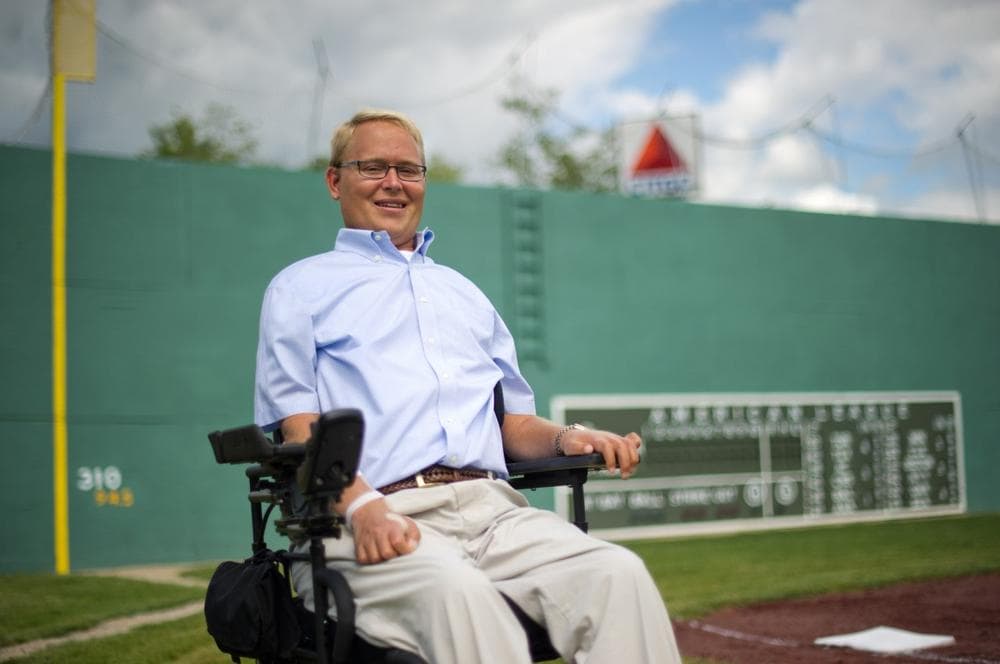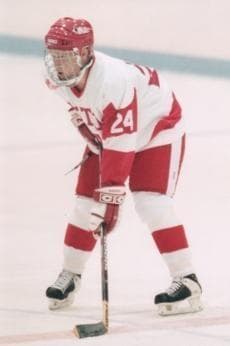Advertisement
Commentary
Life After A Life-Changing Injury: Reflections From Travis Roy

Even as a new post-Marathon normalcy settles in for the residents of Boston, it will still be quite some time before those who suffered the more catastrophic injuries find any semblance of “normal.” When I was paralyzed in a freak hockey accident in the fall of 1995 at Boston University, I could only imagine what my life would become.

I assumed that my future would be full of limitations and that I would most likely spend the rest of my life in a wheelchair, living in an addition to my parents’ home. I know, for those that are still lying in hospital beds or are beginning their physical therapy, that they're filled with far more questions than answers.
And I know that all their friends and family want to do is help relieve the pain and mental anguish and restore their loved one's physical abilities. But it’s when the flowers and cards from friends and complete strangers stop pouring in, and the celebrity hospital visits from athletes and politicians come to an end, that those who were injured will see glimpses of their new reality.
I remember lying in my hospital bed when I received my first visit from a peer counselor with quadriplegia. He told me how everything was going to be OK, and that there were still so many things I'd be able to do, and that my life could get to a point where it was better than it was before my injury. I couldn't get this guy out of my hospital room fast enough!
The fact was, I wasn't ready to hear that everything would be ”OK.” I was still grieving for the loss of my physical abilities and independence, not to mention my passion and lifelong dream of a hockey career. I'm no psychologist, but the fact of the matter is, there must be a period of grieving and a time to feel the sadness and anger and to deal with the losses. Eventually, though, in time, there comes a moment when you stop looking back and start creating a new life.
Throughout my rehab process, I kept thinking that certain moments had to have been the “hardest part” of my recovery. For instance, when I got off the ventilator after two months of not being able to breathe, talk or eat on my own, I thought that had to be the “hardest part.” When my inpatient rehab was delayed by a pressure ulcer on my tailbone, and I spent nearly two months in bed trying to get it healed, I thought that must be the “hardest part.” In the end, though, the “hardest part” by far was when I left the safety net of the hospital and returned home.
Rolling through the front door of my family's home for the first time since my injury was when reality hit like no other moment. I had walked through the front door of my house thousands of times, but never had I rolled through it in a wheelchair. When I found myself in my bedroom and saw the hospital bed, medical supplies, and the special lift to get me in and out of my wheelchair, I couldn't help but cry. These things belonged in a hospital — what were they doing in my home?
Advertisement
There must be a period of grieving and a time to feel the sadness and anger and to deal with the losses. Eventually, though, in time, there comes a moment when you stop looking back and start creating a new life.
I have an idea of what it will be like for many of the amputees to lie in bed and see their prosthesis leaning against their bedside table. The question is, how many mornings will it take before their prosthesis becomes a part of them? I know, for me, there are still days when I look at my wheelchair from bed, and I still can't believe it's mine.
It will take months before a new routine is formed. Learning how to get out of bed, to bathe, to dress, to maneuver stairs, will all take practice and patience — lots of patience. Finding balance in life takes time, not only for the injured, but also for their surrounding family and friends. My advice to those who are injured is to cling to those things that still put a smile on your face, and build from there.
I also believe it's critical not to give up after a bad experience. The first time I left the hospital, after nearly five months, I went to a restaurant. Before my injury, I loved going out to eat. But when I got to the restaurant that night and rolled up to the table, my wheelchair’s armrest kept me from getting close enough to the table so that my mother could help feed me. Every time she gave me a bite, she had to stand up. Each time she stood up, everyone in the restaurant looked at me. Once again, I couldn't help but cry, as this wasn't how my life was supposed to be.

But the next time I went out to eat, I figured out how to get closer to the table so my mother didn't have to stand to feed me. The third time I went to a restaurant, I knew what to expect, and things went a little more smoothly. Now going out to eat is once again one of my favorite things to do.
For those injured in the Marathon bombings, I believe they have a huge advantage over other people that have become disabled. I know firsthand what it means to have an entire city, all of New England, and the whole country rooting for you. The money raised through The One Fund will not only help alleviate some of the financial burdens, but it will also provide a unique sense of pressure that can be used to the injured person’s advantage.
For those injured in the Marathon bombings, I believe they have a huge advantage over other people that have become disabled. I know firsthand what it means to have an entire city, all of New England, and the whole country rooting for you.
For me, knowing that little youth hockey players broke open their piggy banks and donated their savings to the Travis Roy Foundation, or remembering the couple that canceled their honeymoon and donated the money to me, made me realize that people were making sacrifices so that my life could be just a little bit better. It made me want to make those people proud, and strive to become a productive part of society again.
People ask me if I “accept” my injury, and I must admit I've spent time thinking about it. My response is I'm not sure I'll ever accept it, but I will make the best of it.
The truth is, my life is far better than I ever imagined it would become. No, I can't do the physical things that I used to, and for those who were injured there will be many challenges ahead. But we can still laugh, we can still cry, we can still enjoy the people around us. And you tell me: What's more important than that?
Related:

